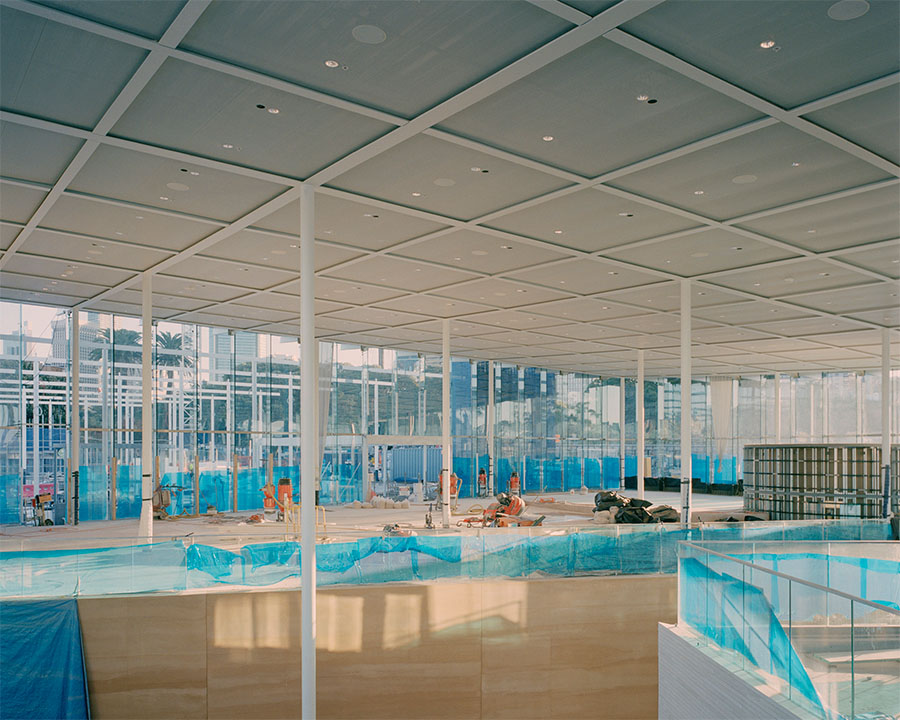The Relevance of Materiality
Materiality vs. Virtuality
At the Carnegie Mellon School of Architecture (SoA) our students learn how to use computational technologies to create their designs. But, more critically, they also learn to consider how their designs affect the human experience. This requires greater sensitivity to the material and social cultures within which they build — not only in the physical world, but also in the digital world, where we all spend a great deal of time.
As virtuality and materiality continue to intermesh with one another, we will see unique opportunities and challenges emerge for designers. As our 2022–23 public programs explore this theme of Materiality, we’re speaking with alumni working across the materiality/virtuality spectrum in our e-SPAN Newsletters. The two alumni highlighted below — Yumiko Yamada (B.Arch 1999), partner at SANAA, and George (Qiaozhi) Wang (MSCD 2015), software engineer at Meta’s Reality Labs Research — work at polar opposites of this spectrum, but the concern for human experience always remains central to their work.
Yamada is a partner at SANAA, the Pritzker Prize-winning firm where she has led some of the firm’s most exciting projects around the globe. Her research takes her to the cutting edge of material science and also engages material choices with ancient venerability. The recently completed Sydney Modern project, a contemporary art museum at the Art Gallery of New South Wales in Sydney, Australia, is an example of the latter. The project features a sweeping rammed earth wall comprised primarily of local soils which six highly specialized craftsmen spent over a year building layer by layer.

Yamada’s knowledge has grown over her career, but she remains curious, keen to explore her options, and willing to take risks. When asked what encouragement she would offer SoA students looking forward to architecture careers, she recounts a story from her last year at school. She had read architect Rem Koolhaas’s "Delirious New York," and — with what she calls naivete — set her heart on working for his firm, OMA. While visiting Europe after graduation, she "just went to his office, knocked on the door, and asked to visit. I didn’t want to work at a place I didn’t like!" Koolhaas’s staff was kind, if confused, and welcomed her in to look around. A year later, she was, in fact, hired to work for OMA. So, her encouragement to architecture students? She laughs ruefully: "Don’t be afraid to try. Always aim high!"
Wang, a software engineer at Meta’s Reality Labs Research in Pittsburgh, works at the intersection of the virtual and the material. In his work, he collaborates with researchers in machine learning, 3D reconstruction and other cutting-edge topics related to augmented reality (AR) and virtual reality (VR). He’s currently working on the Codec Avatars project to design a photorealistic human avatar to be used for telecommunication, telepresence and VR in the Metaverse. If that sentence sounds like the polar opposite of architecture, Wang invites you to broaden your thinking about the interplay between physical and virtual environments.
"The physical world can never lose its meaning."
George (Qiaozhi) Wang
After earning a bachelor’s degree in architectural engineering, Wang chose the SoA for graduate school because it attracts a diversity of applicants — designers, coders, practitioners — and offers an environment perfectly tailored to exploring the intersections between computing and architectural design. He enjoyed working with an inspiring, diverse cohort in CodeLab, the SoA’s interdisciplinary research and learning laboratory focusing precisely on those intersections.
Wang is a vocal supporter of digital design but cautions that "the physical world can never lose its meaning." This dual reality underlies his advice to current architecture students, as he encourages them to prioritize creating a balance between work and their engagement with the physical world. Wang has found this balance despite the intensity and challenge of his work, and he continues to follow his passion for augmenting physical environments with virtual realities.
featuring the following:
Sydney Modern Project (exterior), Sydney, Australia
image courtesy of Rory Gardiner
cover photo from George Wang's MSCD thesis project, "Project HADEN: HAptic DEsign iNterface for Expressive Spatial Design in Virtual Reality"
image courtesy of George (Qiaozhi) Wang
Sydney Modern Project (interior), Sydney, Australia
image courtesy of Rory Gardiner